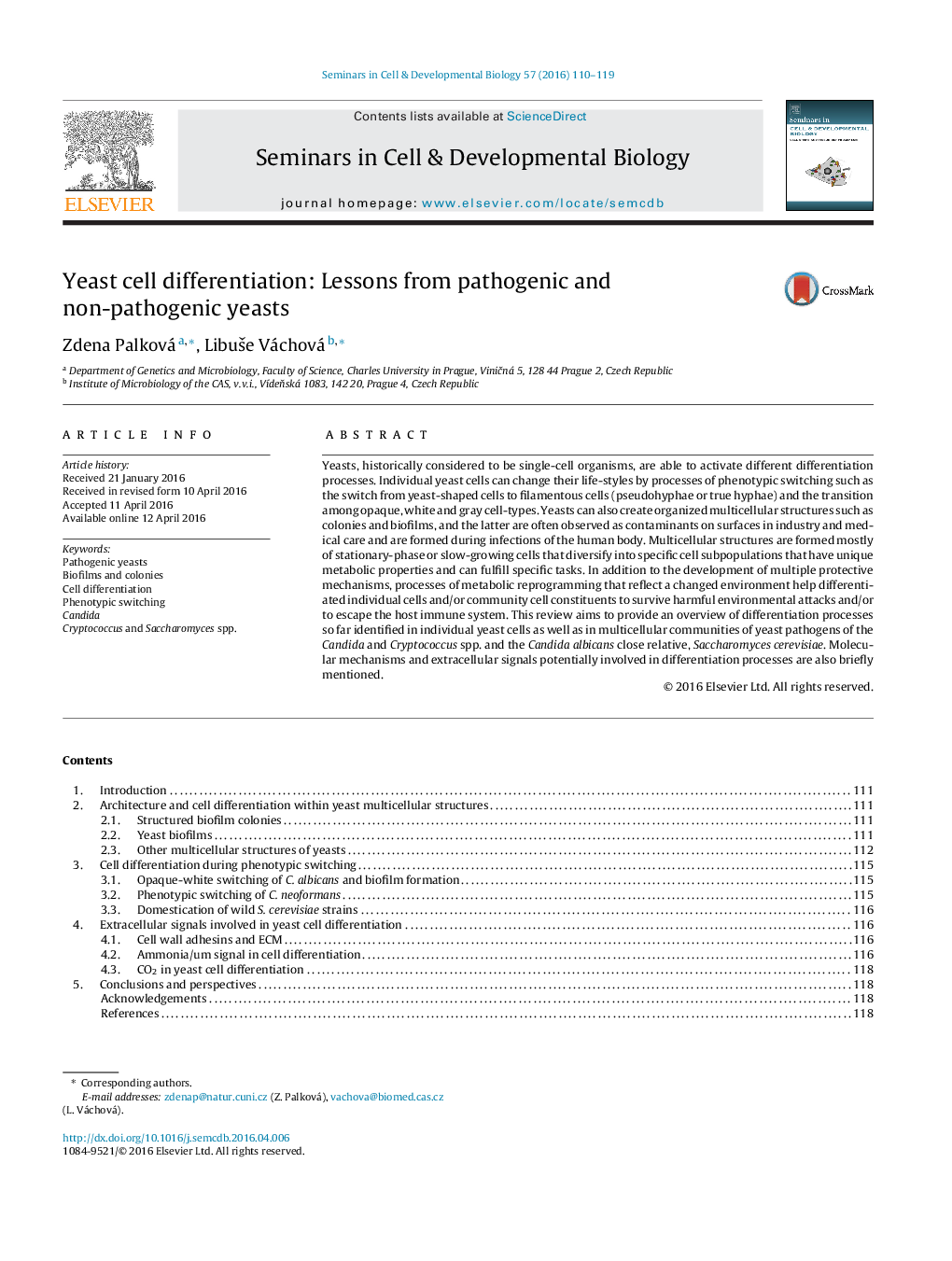| کد مقاله | کد نشریه | سال انتشار | مقاله انگلیسی | نسخه تمام متن |
|---|---|---|---|---|
| 2202464 | 1551366 | 2016 | 10 صفحه PDF | دانلود رایگان |
Yeasts, historically considered to be single-cell organisms, are able to activate different differentiation processes. Individual yeast cells can change their life-styles by processes of phenotypic switching such as the switch from yeast-shaped cells to filamentous cells (pseudohyphae or true hyphae) and the transition among opaque, white and gray cell-types. Yeasts can also create organized multicellular structures such as colonies and biofilms, and the latter are often observed as contaminants on surfaces in industry and medical care and are formed during infections of the human body. Multicellular structures are formed mostly of stationary-phase or slow-growing cells that diversify into specific cell subpopulations that have unique metabolic properties and can fulfill specific tasks. In addition to the development of multiple protective mechanisms, processes of metabolic reprogramming that reflect a changed environment help differentiated individual cells and/or community cell constituents to survive harmful environmental attacks and/or to escape the host immune system. This review aims to provide an overview of differentiation processes so far identified in individual yeast cells as well as in multicellular communities of yeast pathogens of the Candida and Cryptococcus spp. and the Candida albicans close relative, Saccharomyces cerevisiae. Molecular mechanisms and extracellular signals potentially involved in differentiation processes are also briefly mentioned.
Journal: Seminars in Cell & Developmental Biology - Volume 57, September 2016, Pages 110–119
